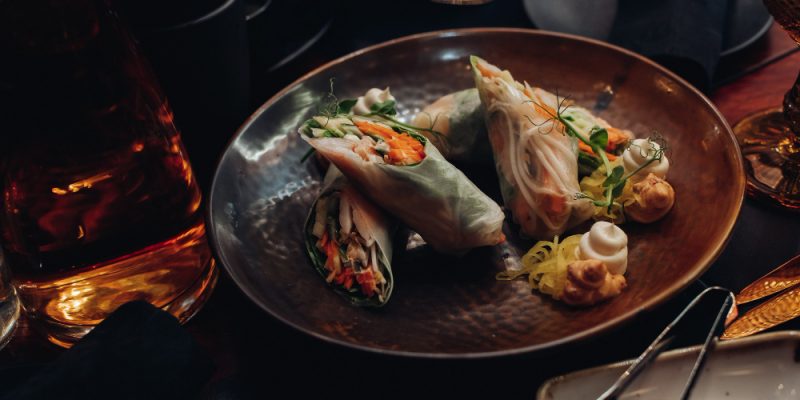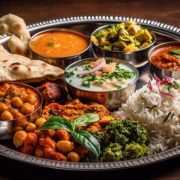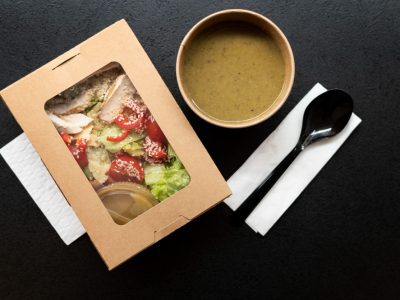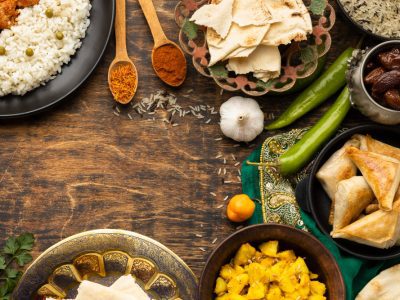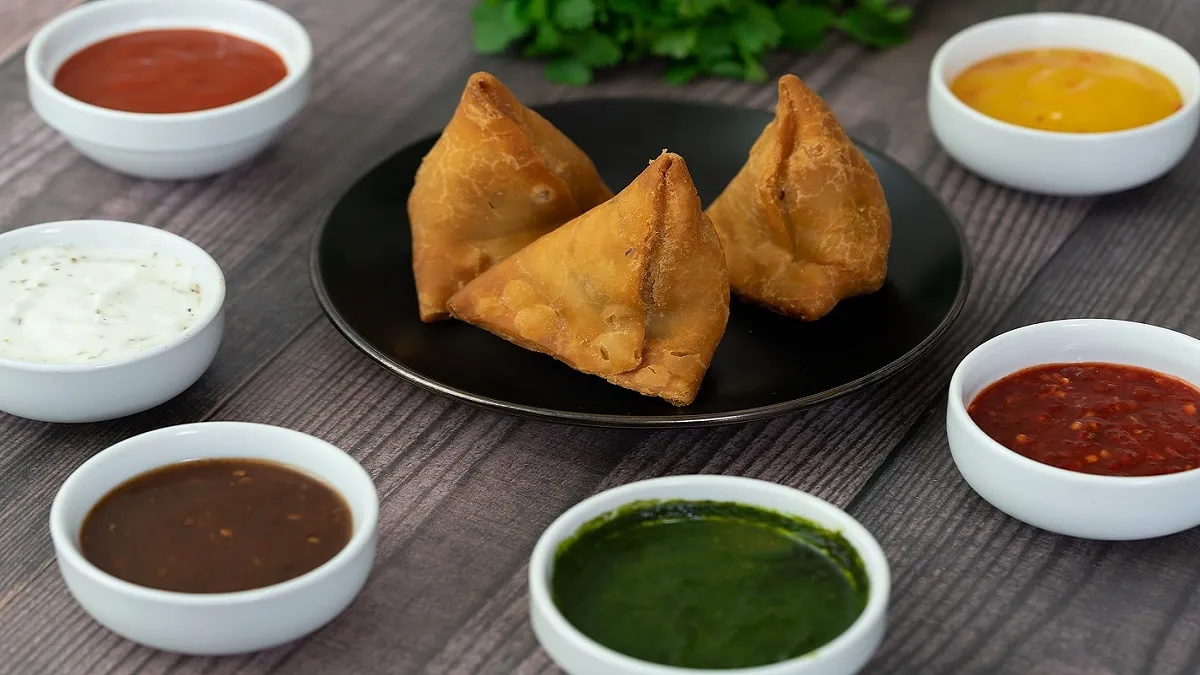The cuisine of India is a wonderful mosaic of national traditions, local specialities, and exotic tastes. As a part of its rich culinary heritage, street food is both dynamic and essential to the national identity. No matter where you are in India—the bustling avenues of Delhi or the winding lanes of Chennai—the street food is a true window into the country’s cultural heritage.
The last several decades have seen remarkable transformations in this traditional dish. Traditional street foods are getting a modern makeover from modernist chefs and foodies who are incorporating ingredients and cooking methods from all around the globe. This way of cooking pays homage to ancient recipes while also catering to modern preferences by using a combination of modern techniques and more traditional ingredients. A dish that is both familiar and novel is the final product.
This article delves into the fascinating modern takes on classic Indian cuisines, the evolution of fusion cuisine, the significance of street food in India, and the thriving food scene in Bangalore, India.
The Street Food Scene in India and Its Relevance
One cultural characteristic that reflects India’s social fabric, many geographies, and storied past is street food. As a culinary joy, it is not enough. Due to their accessibility and low cost, these delicious treats unite individuals from many backgrounds.
Cultural Significance
The wide variety of local traditions and ingredients used in Indian street food causes it to vary substantially across the nation. As a representation of the city’s diverse population and fast-paced lifestyle, the vada pav is a characteristic meal in Mumbai. It consists of spicy potato fritters sandwiched between two buns. The contrasting puchkas (pani puri) of Kolkata, with their burst of tangy tastes, are a testament to the city’s artistic heritage. This food is more than just food; it is a representation of the local culture and history.
Economic Impact
Providing jobs for millions of people and bolstering local supply chains, India’s street food industry is a major economic driver. The constant need for street food is due to the fact that it is a mainstay for people who commute every day, such as students and workers, and it is also affordable. Domestic and foreign food tourists flock to these bustling street markets, which boosts the economy even more.
Social Dynamics
Places selling street food bring people together from all walks of life in an informal setting. People from all walks of life can get together over a shared meal of chaat or a cup of chai bought from a roadside vendor. The inclusive ethos of Indian society is reflected in these communal dining events, which improve social bonding.
Exploring India’s Street Food Fusions: Where Old Recipes Meet the New
Modern, culturally sensitive cuisines have emerged from the blending of classic Indian street food with international influences. This innovative blending is especially noticeable in Bangalore, a city well-known for its vibrant culinary scene and willingness to try new things with cuisine.
1. Gaia: Redefining Vegetarian Fusion Cuisine
Gaia, a vegetarian restaurant in the middle of Bangalore, serves food with a modern twist by combining Indian flavours with international cooking styles. The restaurant’s Head Chef Shreyas Bhatt is working to elevate vegetarian fare to a more mainstream level of excitement and accessibility. Tandoori broccoli with quinoa salad and spicy avocado chutney is one example of a meal that showcases the menu’s skilful integration of classic tandoori flavours with modern, health-conscious ingredients. This fresh method not only updates traditional tastes but also meets the needs of contemporary diets.
2. Fusion Street Global Cuisine: A Melting Pot of Flavors
Fusion Street Global Cuisine, located in Bangalore, offers an eclectic blend of meals that combine international flavours with Indian street food mainstays, living up to its name. Some of the standout dishes include Fusion Street Prawn Curry, which blends coastal Indian spices with a touch of Thai lemongrass, and Chutta Erachi, a traditional Kerala-style smoked pork dish—reimagined with a barbecue sauce. An unforgettable meal honouring the meeting of several culinary cultures is yours to enjoy with these creative delicacies.
3. Toast & Tonic: East Meets West
Toast & Tonic is a popular Bangalore eatery known for its innovative fusion cuisine, which combines world cooking styles with ingredients from Indian street food. Dishes like the “Kharini,” which is a combination of traditional Indian spices and foreign ingredients, give new takes on old favourites on the menu. This method not only honours classical Indian cooking techniques, but it also challenges palates with novel flavour combinations.
4. Jugni Kitchen + Bar: Contemporary Takes on Classic Street Eats
A contemporary take on classic Indian street cuisine is available at Bangalore’s Jugni Kitchen + Bar. Butter Chicken Tacos wrap the classic curry within soft taco shells and Pav Bhaji Fondue, a typical spiced vegetable mash served with bite-sized bread pieces for dipping, are two examples of their inventive menu items. These innovative takes on classic recipes capture all the flavour of the originals while serving them in new ways that modern eaters love.
5. Sunburn Union: Fusion Fiesta
Famous for its lively ambience and menu that deftly combines popular Indian street dishes with global culinary trends, Sunburn Union is located in Bangalore. Tandoori Chicken Pizza is a great example of a wonderful fusion dish that appeals to a wide range of tastes because it combines the smokiness of tandoor-cooked chicken with the cheesiness of an Italian pizza base. The creative use of Indian flavours with other world cuisines highlights their adaptability.
6. Klayworkz Barista: Artisanal Coffee Meets Indian Snacks
In Bangalore, you may find Klayworkz Barista, a one-of-a-kind fusion spot that serves exquisite coffees with creative spins on classic Indian delicacies. Their menu offers a delightful blend of traditional Indian beverage flavours with classic Western treats, such as Filter Coffee-flavoured Macarons and Masala Chai-infused Doughnuts. Coffee connoisseurs and those looking for a fresh take on classic Indian flavours will both enjoy this innovative blend.
Conclusion
An intriguing shift in India’s culinary scene is the incorporation of international flavours into street food. The potential for creative street food innovations is limitless as long as foodies and chefs keep trying new things with ingredients, methods, and presentation styles.
In recent years, street food fusion has been all the rage, with cities like Bangalore serving as epicentres for this trend. These updated versions celebrate the long history of Indian street food while giving old tastes a fresh spin, making them more interesting to a wider range of people.
The rise in popularity of fusion cuisine has highlighted the importance of delivery services like HOGR in expanding people’s access to these innovative dishes. The distinctive street food fusions may now be enjoyed by food aficionados in the comfort of their own homes, increasing the reach and influence of this emerging trend.
As India’s culinary scene gets more experimental, one trend that is sure to stand out is street food fusion, which combines old favourites with new ingredients in exciting ways. Bridging the gap between heritage and creativity in the most delectable way, India’s street food fusions provide something for everyone, whether you are a traditionalist who likes the classics or an adventurous person keen to experience new flavours.
A food enthusiast and a blogger – someone who likes to eat and write about it. I’m passionate about exploring different cuisines and challenging my palette. I give into my food craving regularly and am often on the hunt to find my new favorite food place in town.
